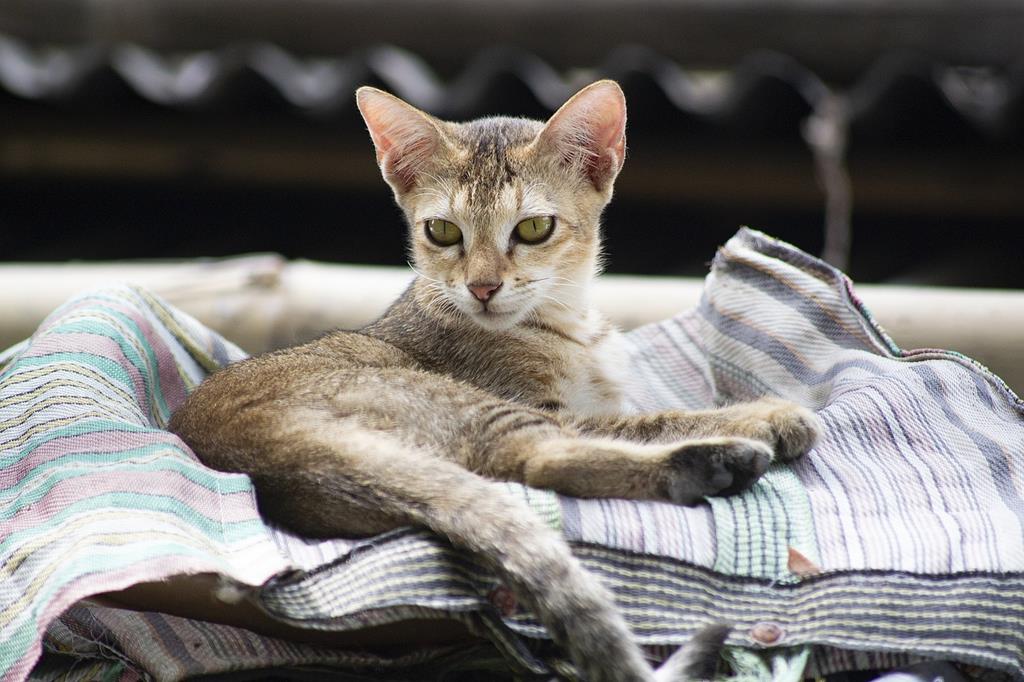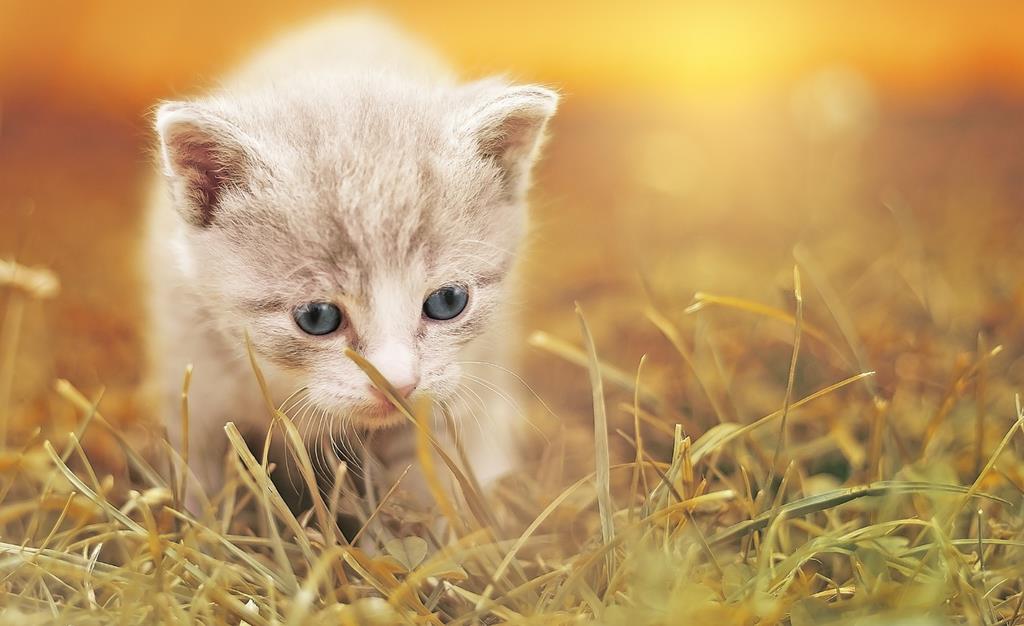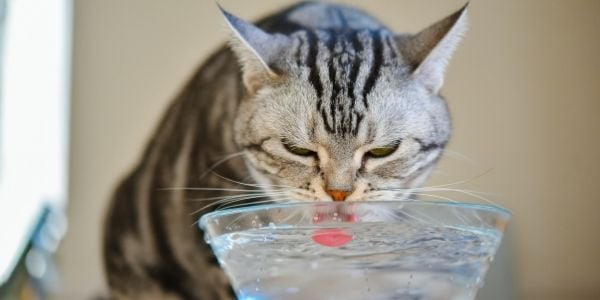Your cat’s water fountain filter may be pink due to bacterial growth, specifically Serratia marcescens. This bacterium thrives in moist environments and is known for its distinctive pink pigment.
Ensuring your furry companion has access to clean drinking water is essential for their well-being. Water fountains for cats are a popular choice for pet owners, offering continuous flowing water that encourages hydration. Yet a common issue arises when owners spot a pink residue building up on the fountain’s filter.
Such discoloration often stirs concern, requiring a clear understanding of its cause and implications. It’s not just an aesthetic matter; the health of your pet could be at stake. Regular maintenance and understanding of your cat’s water fountain can prevent the proliferation of unwanted bacteria, keeping your cat happy, hydrated, and healthy.

Credit: www.nytimes.com
The Pink Phenomenon In Cat Water Fountains
Cat owners often notice a curious pink tinge in their pet’s water fountain filter. This sudden appearance of a pink hue can be alarming. Known as the “Pink Phenomenon”, it has prompted discussions among pet parents. Understanding this can ensure the health and hydration of your feline friends.
Identifying Pink Mold: Is It Harmful?Identifying Pink Mold: Is It Harmful?
A pink film or slime in your cat’s water fountain might be mold. This is not actually mold but a type of bacteria nicknamed pink mold. Scientifically, it’s called Serratia marcescens.
Is this bacteria harmful? It can be. While usually not a danger to healthy cats, it can cause infections in pets with weak immune systems. Frequent cleaning and filter changes prevent its growth.
Causes Of Pink Discoloration In Filters
Pink discoloration in water filters can arise from several sources. Key reasons include:
- Mineral content in water
- Presence of Serratia marcescens bacteria
- Airborne bacteria settling in
Prevent the pink by regular maintenance. Use clean water, sanitize the parts, and replace filters as advised.
| Prevention Technique | Frequency |
|---|---|
| Filter Replacement | Every 2-4 weeks |
| Fountain Cleaning | Weekly |
| Sanitization | Monthly |
The Science Behind The Pink Hue
The Science Behind the Pink Hue often puzzles cat owners. Discover why your cat’s water fountain filter might turn pink suddenly. It’s not just about cleanliness. Explore the microscopic world and chemical reactions that can lead to this surprising change in color.
Microbial Culprits: Bacteria And Fungi
The pink hue in your cat’s water fountain can often be traced back to microbes. Microbes are tiny organisms. Some like bacteria and fungi are common in households. They love moist environments. Your cat’s water fountain is perfect for them to grow. They form a pink biofilm when they multiply.
- Bacteria: Some bacteria produce pigments. These pigments can be pink. When bacteria grow in the filter, they can turn it pink.
- Fungi: Fungi also love wet places. They can also create pigments. These too can cause a pink color.
Regular filter changes prevent microbes from settling. Cleaning the fountain stops their growth. Keep your cat’s water clean and safe.
Water Chemistry And Mineral Deposits
Besides microbes, water itself may cause the pink hue. This involves chemistry. Minerals in water contribute to this process.
- Iron: Some water has iron. When iron reacts with oxygen, it forms rust. Rust can look pinkish.
- Magnesium: Magnesium in water combines with bacteria. This can lead to a pinkish residue as well.
Using filtered water can reduce mineral content. This might prevent the pink hue. Changing filters regularly maintains the fountain. It also keeps the water fresh.
Effects On Feline Health
When a cat’s water fountain filter turns pink, pet owners might worry. This change can mean a health risk for our furry pals. Let’s dive into how pink mold may affect your cat’s health.
Potential Risks Of Pink Mold To Cats
Pink mold isn’t true mold, but a form of bacteria called Serratia marcescens. Here’s why it’s a big deal:
- Respiratory issues: Breathing in bacteria can harm a cat’s lungs.
- Infections: Pink mold can lead to infections if not handled quickly.
- Pet stress: Some cats may avoid drinking water that looks or smells odd.
Clean the fountain and replace filters often to avoid these problems.
Importance Of Clean Water For Cats
Cats need water just like we do. Clean, fresh water keeps them hydrated and healthy. Here’s why it matters:
| Health Benefit | Why It’s Important |
|---|---|
| Healthy Kidneys | Flushes toxins |
| Good Digestion | Helps with food absorption |
| Energy Levels | Stays active and playful |
Change your cat’s water daily. Clean the fountain once a week. This will help your pet stay healthy and happy.
Preventive Measures For Pink Contamination
Is the sight of pink slime in your cat’s water fountain causing concern? Understanding the source of this pink contamination is important for the health of your pet. This pink film, often a result of bacterial growth, warrants a closer look at preventive measures to ensure your feline friend’s water supply remains clean and safe.
Regular Maintenance And Cleaning Practices
Regular maintenance keeps water fountains clean and free from pink bacteria. Set a cleaning schedule and stick to it.
- Empty and rinse the fountain once a week.
- Use mild soap and a brush to scrub away slime.
- Disassemble all parts and clean individually.
- Rinse thoroughly to remove soap residue.
Replace water daily and clean water bowls daily.
Choosing The Right Filter And Fountain Material
Choosing the right materials can help prevent pink bacterial growth.
| Type | Pros | Cons |
|---|---|---|
| Stainless Steel | Resists bacteria, easy to clean. | More expensive. |
| Ceramic | Sturdy, less prone to scratches. | Heavy and may chip. |
| Plastic | Cheaper, lightweight. | Scratches easily, may harbor bacteria. |
Use fountains with easy-to-change filters. Replace filters as recommended by the manufacturer.
Troubleshooting And Solutions
Troubleshooting and Solutions: Discovering a pink tint in your cat’s water fountain filter can be troubling. Often, this indicates a bacterial bloom commonly known as Serratia marcescens. This bacterium thrives in moist environments and can lead to unwanted smells and potential health issues for your feline friend. Let’s tackle the appropriate steps to ensure your cat’s hydration hub remains clean, clear, and safe.
Steps To Clean And Disinfect The Water Fountain
- Unplug the fountain and empty it.
- Dismantle all components.
- Scrub each part with hot, soapy water.
- Use a vinegar solution (1 part vinegar to 2 parts water) to soak the parts.
- Rinse thoroughly to remove any residue.
- Air-dry completely before reassembling.
Employing a vinegar soak once a week can prevent bacterial growth. Regular cleaning keeps your cat’s water clean and the fountain operating smoothly.
When To Replace Filters And Seek Professional Help
- Change filters every 2-4 weeks or according to the manufacturer’s guidelines.
- Inspect for signs of wear or persistent contamination.
- Contact customer service if issues persist after changing the filter.
- In cases of mechanical failure, seek professional repair or consider a replacement.
Regular filter replacement and thorough cleaning are pivotal for fountain maintenance. If these measures don’t solve the issue, expert advice may be necessary to protect your cat’s health and wellbeing.

Credit: shop.mattel.com
Consumer Advice For Cat Water Fountains
Are you puzzled by the pink hue in your cat’s water fountain filter? This could be due to bacteria commonly found in cat saliva. It thrives in moist environments. Regular maintenance is key. Read on for top tips on keeping your feline’s fountain fresh!
Recommended Products And Accessories
Maintaining a cat water fountain requires proper tools. Ensure your pet’s health with the right products.
- Anti-bacterial filters: These keep the water clean.
- Non-toxic cleaning agents: Safe for pets, these aid in preventing bacterial growth.
- Brush sets: Small brushes help reach into crevices.
Invest in quality fountain materials, like stainless steel. They are less likely to harbor bacteria.
Reading Reviews And Product Comparisons
Before buying, read reviews. Look for feedback on cleaning ease and filter life. Compare different brands. Find the best for your cat’s health.
| Feature | Importance | Recommended Product |
|---|---|---|
| Filter Quality | Essential | Brand X with anti-bacterial properties |
| Material | Crucial | Stainless Steel Brand Y |
| Usability | High | Brand Z with easy clean features |
Consider community forums for unbiased product comparisons. Look for videos on maintenance for practical advice.

Credit: www.walmart.com
Frequently Asked Questions On Why Is My Cats Water Fountain Filter Pink
What Causes Pink Residue In Cat Water Fountains?
The pink residue is typically a biofilm formed by bacteria, such as Serratia marcescens. These bacteria thrive in moist environments and on organic matter in the water, including food particles or saliva.
Are Pink Bacteria In Pet Fountains Harmful?
While many types of bacteria causing the pink film are not harmful, some can cause illness, especially in pets with weakened immune systems. Regular cleaning prevents bacterial growth and potential health risks.
How Often To Change Cat Water Fountain Filters?
It’s recommended to change cat water fountain filters every 2-4 weeks. This frequency can prevent the growth of bacteria and ensure clean, fresh water for your pet at all times.
Can I Clean Pink Residue Off Cat Fountain Filters?
Yes, you can clean pink residue from filters using a mix of water and vinegar to disinfect the filter. However, if the discoloration persists, replace the filter to maintain water quality.
Conclusion
Understanding the cause of a pink tinge in your cat’s water fountain filter is crucial. This discoloration often indicates bacterial growth. Regular cleaning and timely filter changes can prevent this. Don’t let your cat’s hydration be compromised. Ensure their water is clean and fresh for optimal health.



